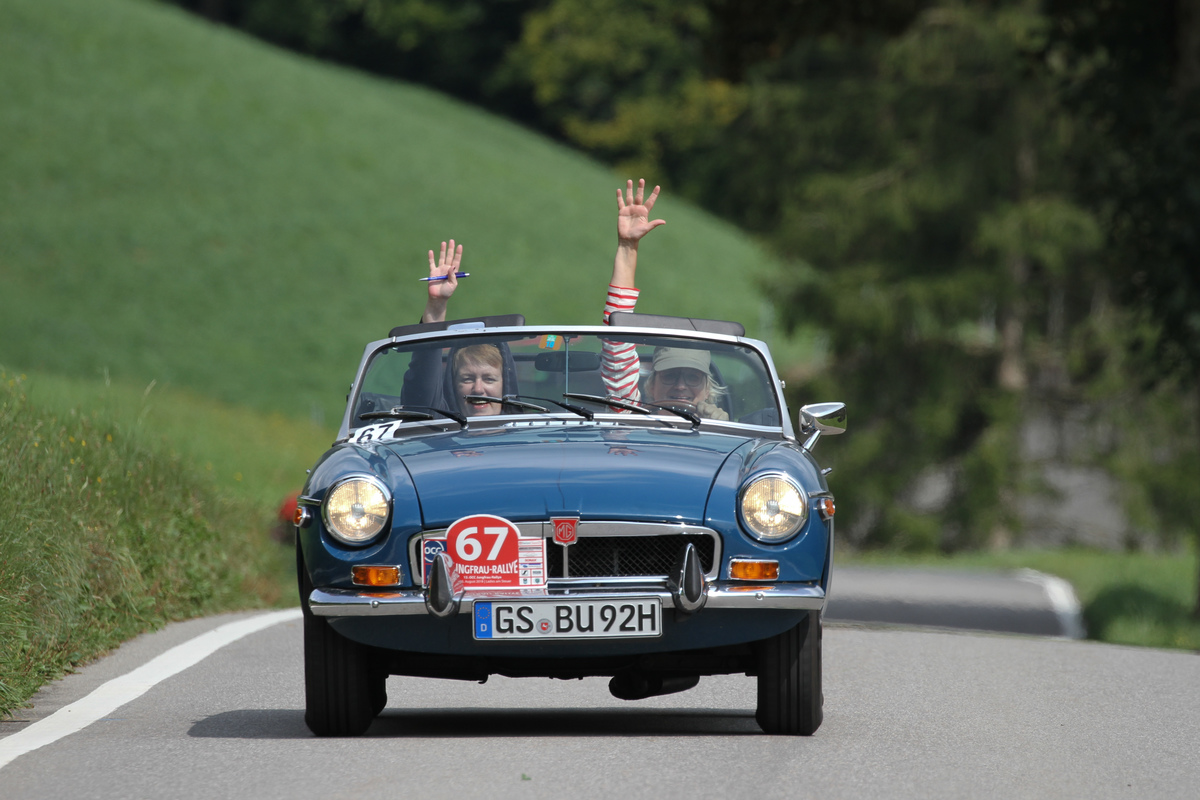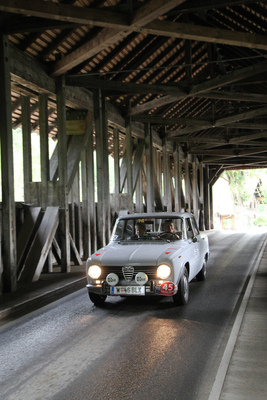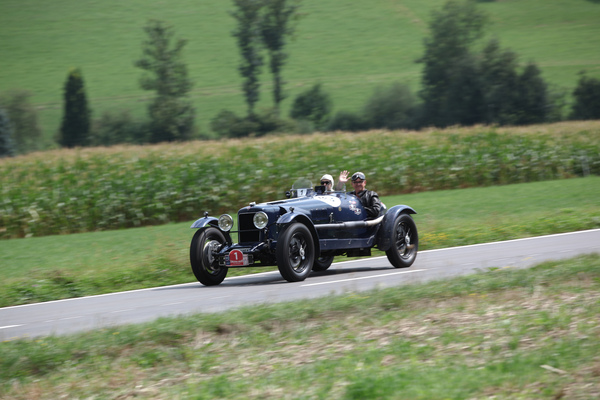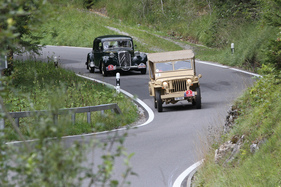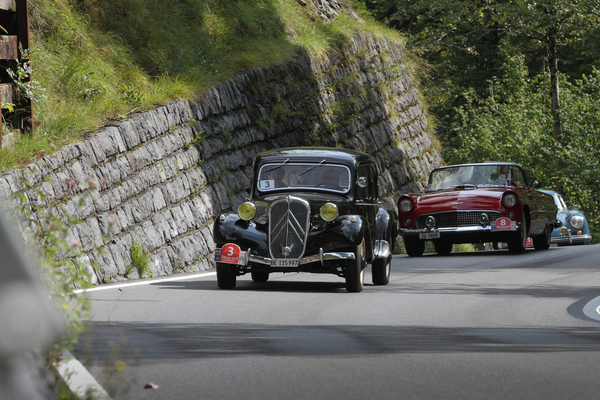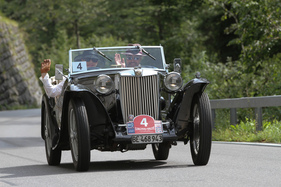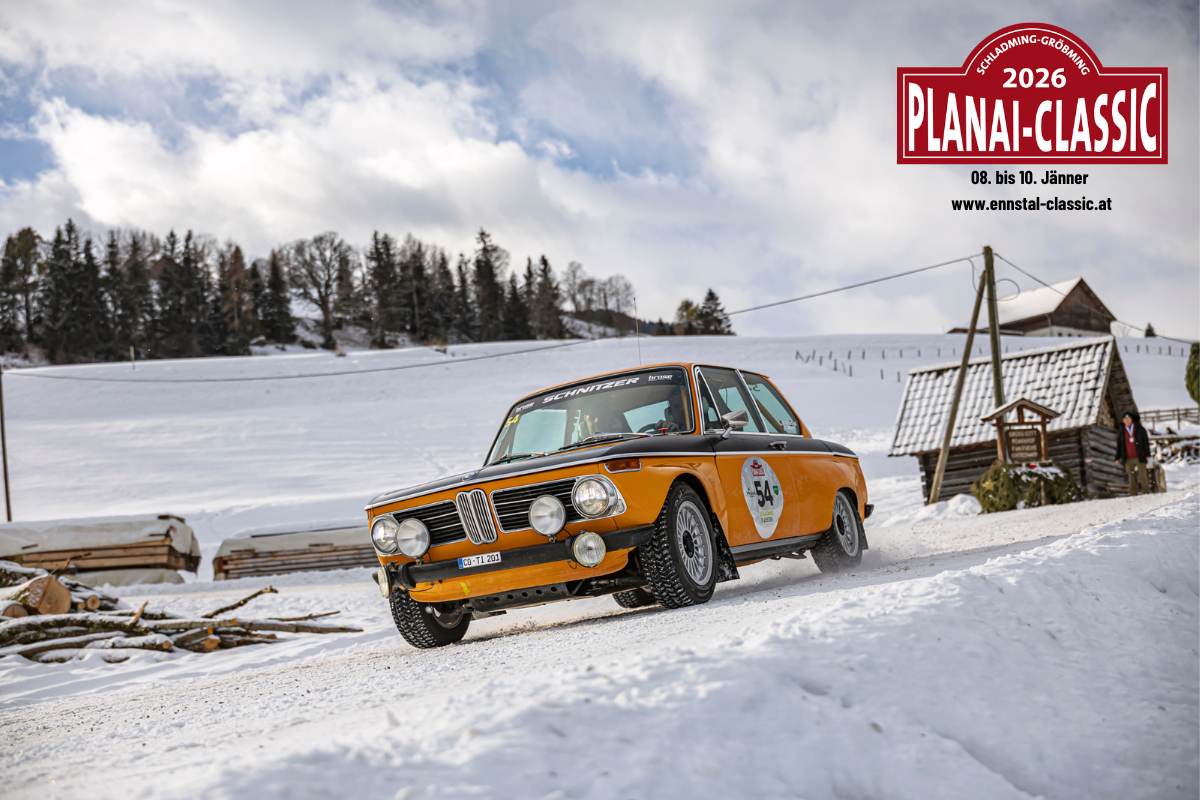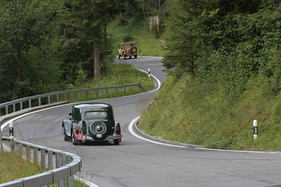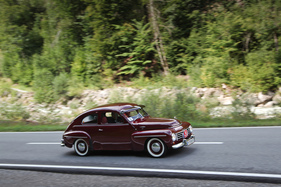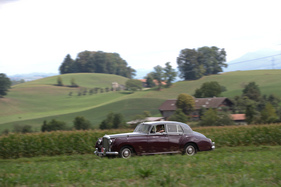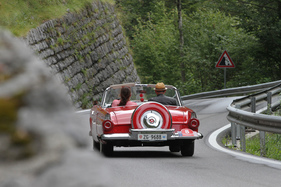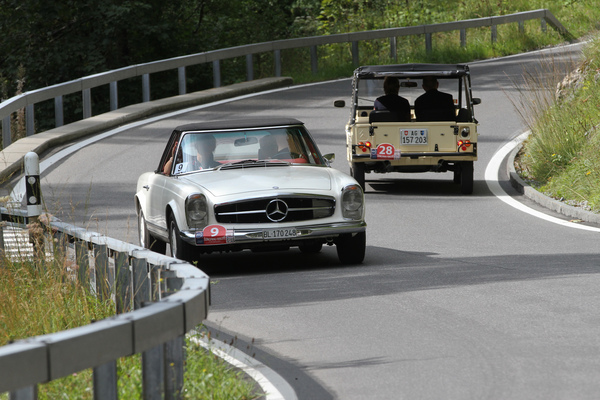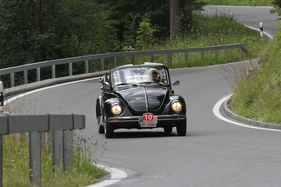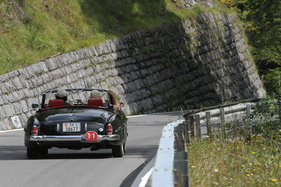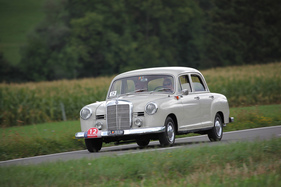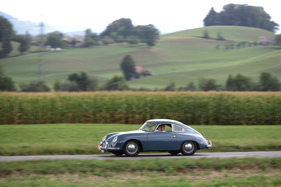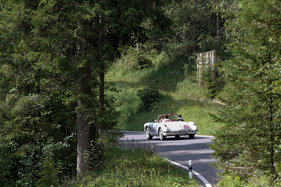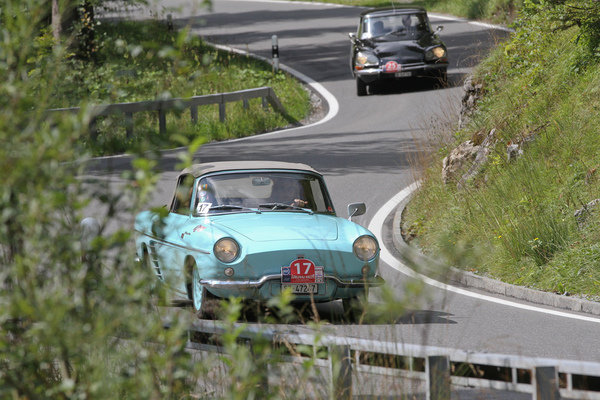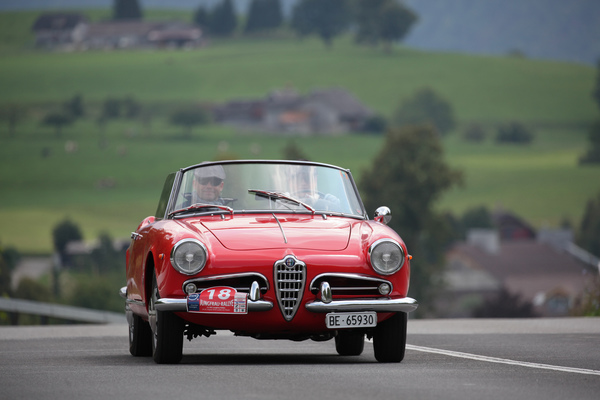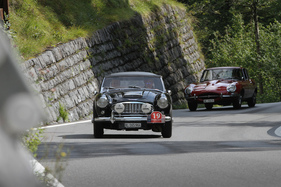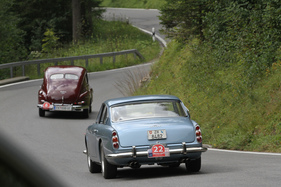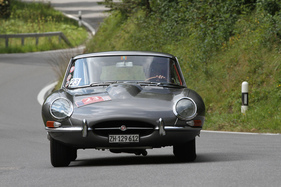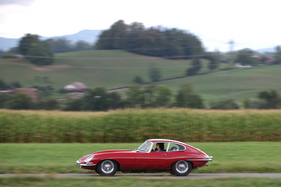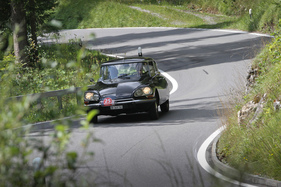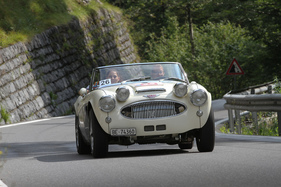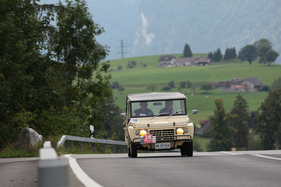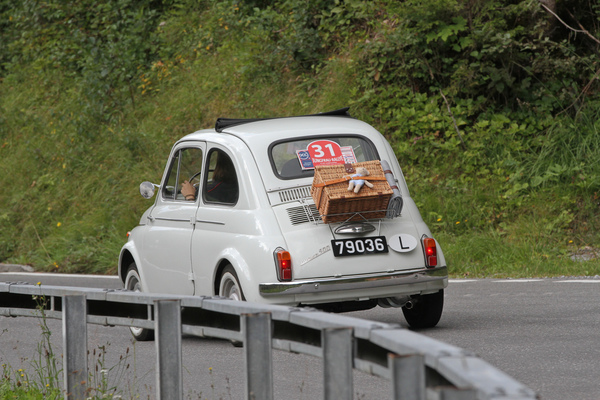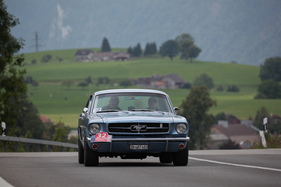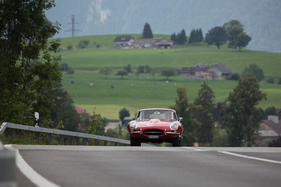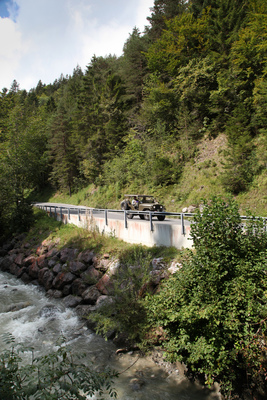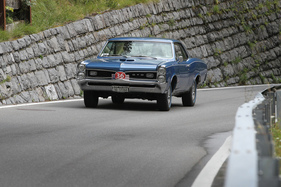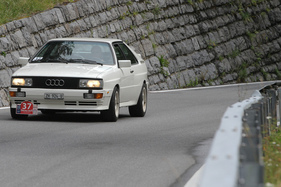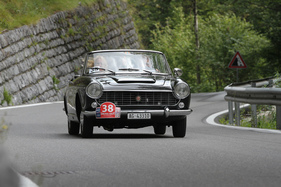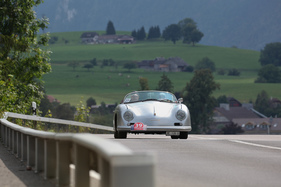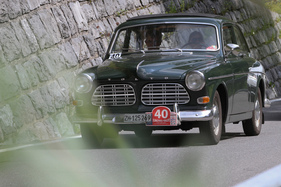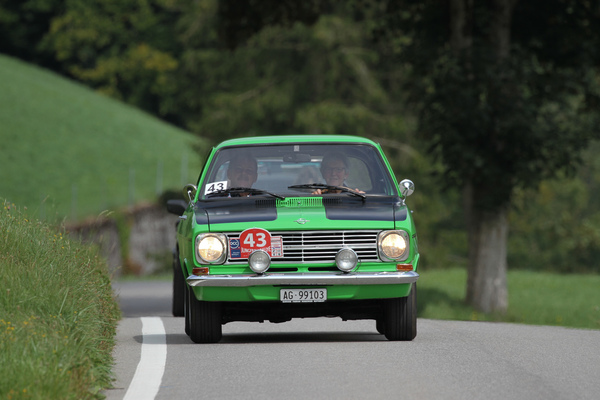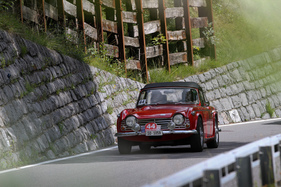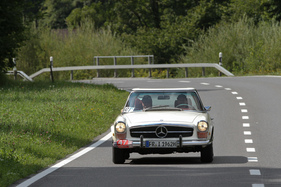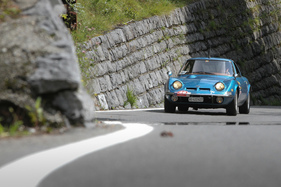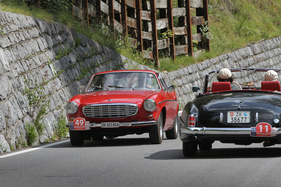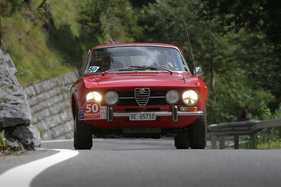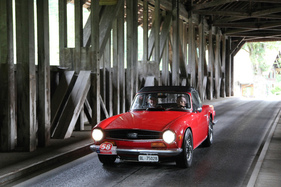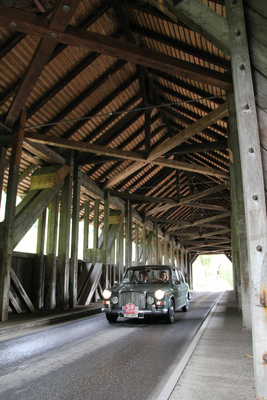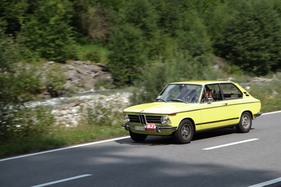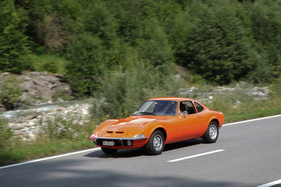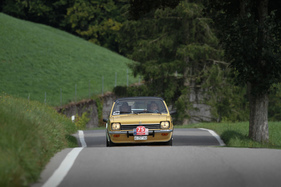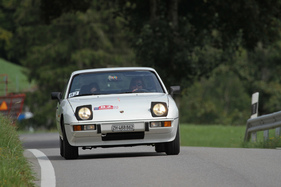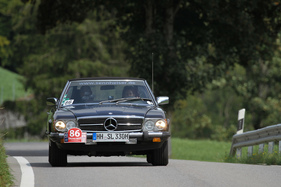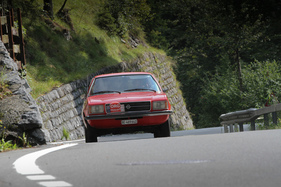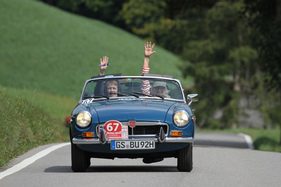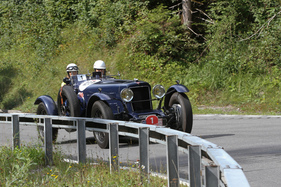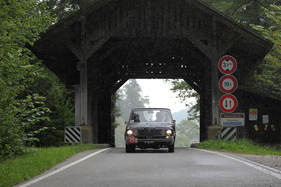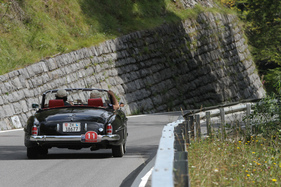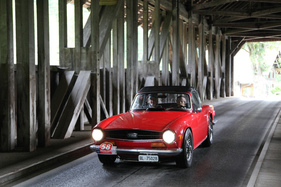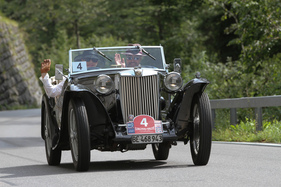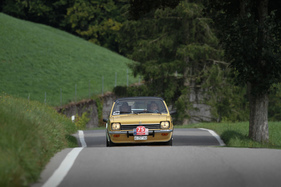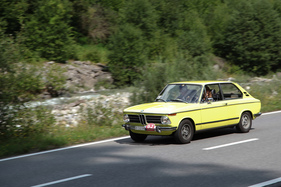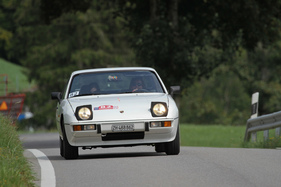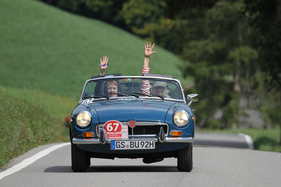The 13th edition of the OCC Jungfrau Rally took place on August 24/25, 2018. For the first time, Saaneland was the starting point for the two-day round trip, where only women are allowed behind the wheel. The field of participants was once again a colorful mix. The oldest vehicle was a 1936 Alvis Special, while the newest vehicles had just turned 30 years old.
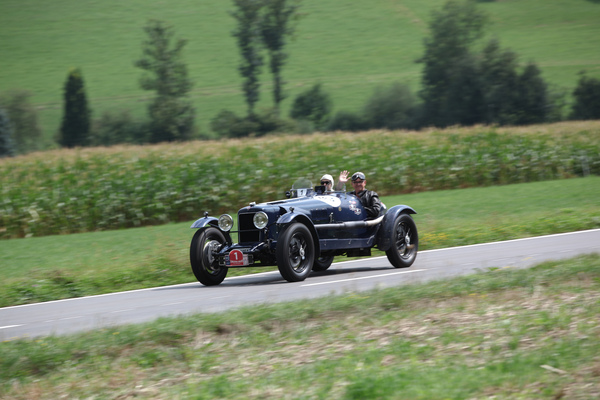
There were 91 teams from Switzerland, Germany, Austria and Luxembourg at the start.
Fresh rally weather
The organizers of the OCC Jungfrau Rally always promise that there will never be a dull moment at their event - so the rally is always held in new places, and this year, once again, areas were explored where the rally had never been before.
This time, however, the variety was not just in the choice of route, but also in the weather. On Thursday morning, it was still hot summer weather for the teams that arrived a little earlier for the preliminary program. On Saturday afternoon, the thermometer on the Col des Mosses only showed a frosty seven degrees.
However, the predicted rain largely failed to materialize. The sun even peeked through the clouds at times, and the cooler weather was also good for the engines - there were significantly fewer breakdowns at the rally than before.
Route through four cantons
The two daily stages took the teams from Saanenland along familiar and unfamiliar routes through the Swiss cantons of Bern, Fribourg, Valais and Vaud.
On Friday, the route first took the old Saanenmöserstrasse to Zweisimmen. The route then led down the Simmental valley and branched off into the Diemtigtal valley. The teams rode various laps there, including to the picturesque village of Diemtigen and to Zwischenflüh. Not to be taken for granted: at the end of the valley, the teams were greeted personally by the mayor of Diemtigen and the managing director of Diemtigtal Nature Park and presented with a piece of mountain cheese - an unusual gesture at a rally!
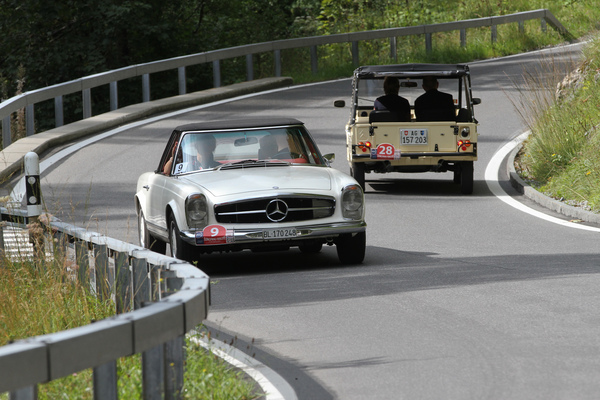
Afterwards, the classic cars drove back out into the valley and met countless teams with later starting numbers, which was a new experience for many. Otherwise, you usually follow the same vehicles at rallies and rarely come across "more distant" start numbers, for example in the event of navigation errors. In any case, there was a lot of waving and honking.
The rally teams stopped for lunch in Blumenstein on Friday. From there, the afternoon stage led towards the canton of Fribourg. One of the highlights on the way there were numerous wooden bridges between Rüti near Riggisberg and Rüschegg. Another highlight was the conclusion of Friday's stage: the route led over the relatively unknown - and on this day almost deserted - Mittelberg Pass back to Saanen.
Visit to the Chablais
Finally, on Saturday, there were several more passes to conquer, including a considerable amount of altitude. The route first led over the Col de Pillon to Diablerets and from there over the somewhat fog-covered Col de la Croix to Villars. The main destination was then the Chablais, the area south of Lake Geneva.
The organizers then offered the teams two options for their return to Saanenland: One option was called "Relax" and led over the Col des Mosses. The other option was called "Adventure". The first option was a winding road with 1100 meters of altitude difference up to the "Tunnel des Agites". The passage through the spectacular natural stone tunnel and the subsequent breathtaking view of Lake Geneva rewarded the teams for their exertions. However, they had to dress warmly for the onward journey along Lac de l'Hongrin: The single-digit temperatures were accompanied by a light drizzle. So the motto "Adventure" was certainly apt...
Light barriers and four-legged friends
A constant companion at this year's OCC Jungfrau Rally was the Saanengeiss. The mascot of the Saanenland also had the same function for the rally. Numerous special stages revolved around the Saanengeiss. During light barrier tests, for example, it was not only necessary to keep an eye on the exact time, but also to feed and water (decorative) goats at the same time. The program also included "normal" light barrier tests, skill or search tasks and unannounced passage checks.
There was a surprise for some teams just before they crossed the finish line. The organizers had installed a light barrier test directly in front of the archway, which had to be passed in exactly 3 seconds. However, many of the navigators had already closed the road book at this point, because they thought they had already reached the end of the rally, and drove through the light barrier without realizing it.
Young winning team
The 13th OCC Jungfrau Rally proved that even novices can master the challenges of a rally. This year's overall victory went to a young team with little rally experience: for driver Stefanie Pollak, it was only the second rally she had taken part in, and navigator Alan Graetz had never taken part in a rally before. The two of them drove a yellow BMW Touring 2000 tii with the apt nickname "Stabilo Boss".
Second and third place in the overall standings went to Niederhauser/Müller in an Alfa Romeo Giulietta Spider and Meier/Meier in a Volvo Amazon.
First place in the women's classification (no men on board) went to last year's defending champions: Team Joannidis/Campagna in a Porsche 924.
Overall, the organizers drew a positive balance of this year's OCC Jungfrau Rally. The only fly in the ointment was an accident on Saturday, which fortunately only resulted in bodywork damage. Otherwise, the atmosphere was good and - apart from the aforementioned weather - there was a lot of positive feedback from the teams.
The next OCC Jungfrau Rally will take place on 30/31 August 2019, further details will be announced by the organizers soon.
